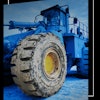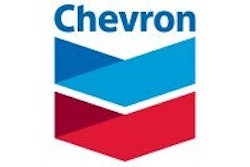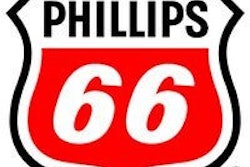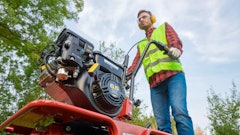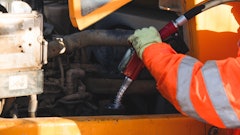Universal Tractor Fluids dominated the construction industry prior to the introduction of more application-specific Caterpillar TO-4 and Allison C-4 fluids.
They continue to be an efficient solution for equipment that uses a common sump for the transmission, differential and hydraulic systems.
But these multipurpose fluids must balance many conflicting demands. “You always have some kinds of trade-offs when you try to design something to do everything,” says Jack Zakarian, consulting engineer, ChevronTexaco Lubricants.
A careful balance has to be found to maximize gear life with the extreme pressure (EP) additives while preventing the degradation of softer metals. If the EP additives are too aggressive, components made of soft and yellow metals — often found in hydraulic pumps and motors — can be damaged.
“The additives that are so effective in EP wear attach themselves to the surface [of the metal] to provide protection,” explains Alex Bolkhovsky, commercial vehicle lubricants advisor, ExxonMobil. “While iron can handle that, copper, lead and the yellow metals can actually be corroded by those same additives. It’s always a balance. You need some EP wear protection in the transmission, but you need to make sure these additives are not aggressive enough to cause any type of corrosion problems.”
“It boils down to the chemistries that are used,” says David Taber, technical coordinator — lubricants group, ConocoPhillips Inc. “If the anti-wear additives are not stabilized properly, they can attack yellow metals.”
Jon Rummel, manager - products, technology and service, Citgo Petroleum Corp., also notes that the EP agents only attack soft or yellow metals if they are not stabilized. “The specifications from the OEMs require proper corrosion testing.” This helps ensure that corrosion will not occur if you stick with manufacturer-specified fluids.
In addition, use aftermarket additives at your own risk. “If a user adds aftermarket additives, that can upset the balance of the formulated fluid,” says Rummel. “Certain additives compete for the metal surface and metal protection can be compromised.”
Dealing With Brake Chatter
The only possible exception would be top treats specifically formulated by reputable suppliers to address brake chatter. “In general, we never recommend putting top treats in. But brake chatter is one case where the top treat solution actually could work,” says Zakarian.
Taber points out, “The friction modifiers in tractor hydraulic fluids are there to minimize and reduce brake chatter.”
Yet, brake chatter can still occur, seemingly at random. “Brake chatter is an extremely complicated phenomenon,” says Zakarian. “I have seen cases where you have 10 units exactly the same with the same lubricant. One will chatter and the other nine will not. It’s a combination of factors.” This includes not only the fluid, but anything that has happened to the friction material on the brakes, the way it was assembled and even the original design.
Fluids have to be designed so the coefficient of friction doesn’t increase as the speed decreases, resulting in a grab and release action that produces chatter. “We have to design fluids that have the right chemistry vs. speed,” says Zakarian. “A transmission fluid will lead to chatter if it doesn’t contain the right additive — we call them friction modifiers — that essentially makes sure the friction curve goes in the right direction. There is an art and science that goes into trying to figure out which additives work well and which don’t.”
“There could be a big tradeoff between brake chatter performance and other things because the additives you put in often are surface reactive,” says Zakarian. “They go to a surface and form a film. They will be in competition with other additives that are trying to form a film, like anti-wear additives.”
“If you are getting chatter, it could be because the friction modifier that is in [the oil] is not as effective for the particular unit design that you have, or the additive has essentially been used up before the rest of the fluid,” says Zakarian. In this case, the top treat is really to supplement what was originally there.
Because there are several causes of brake chatter, a top treat may not solve the problem. “We found that if you get any level of dirt contamination in the reservoir, [wet brake] systems can be very sensitive to that and it can cause brake chatter,” says Taber.
A Move Toward Dedicated Fluids
Modern equipment continues to become more productive through the use of more sophisticated component designs. “As the components — transmission, final drive, etc. — get more sophisticated, their lubrication needs become quite divergent,” says Bolkhovsky.
There are already dedicated fluids, such as FD-1 drivetrain oils. “Looking at the different lubrication requirements of the various components, each has a different appetite,” says Bolkhovsky. “There is actually a lubricant available for each of those appetites.”
When in doubt, refer to the manufacturer-recommended lubricants. Every manufacturer publishes specifications that the transmission oil used in its products must meet. “Different manufacturers use different seals and elastomers,” says Rummel. Sticking with the manufacturer specifications is the only way to guarantee compatibility.
Perhaps one of the most popular specifications is Caterpillar TO-4. It is suitable for transmissions that previously required Caterpillar TO-2. “The TO-4 specification was purely an upgrade,” says Bolkhovsky. This specification addresses more demanding frictional requirements and improved gear wear. “It is an improved fluid,” agrees Rummel. “It provides better power transfer and it has better seal compatibility.”
Newer transmissions use a wide array of different friction materials vs. the older units. This includes different metal to metal compositions, as well as synthetic materials. “So the TO-4 specification has really come into play to provide frictional properties that are sufficient for all of the materials that Caterpillar will use,” says Bolkhovsky. “Secondly, the specification came into play to improve the performance of gear wear.”
These improvements translate into increased performance. “The use of TO-4 isn’t just acceptable for applications that require TO-2. But you will see the improvement in gear wear and frictional properties, which should improve the lifetime of any frictional material used,” says Bolkhovsky.
Electronic Transmissions Generate Heat
The advent of electronic transmissions has placed even more demands on transmission fluids. “These transmissions tend to run a lot hotter and do a lot more work than their manual counterparts,” says Bolkhovsky. The automatic transmissions go through more engage/disengage iterations than their manual counterparts. Therefore, the oil is subjected to more shear forces.
To meet these demands, the Allison C-4 specification was developed. “It provides performance that is both suitable for frictional properties in those automatic transmissions and for the higher temperature and shear requirements that those transmissions bring,” says Bolkhovsky.
Lubricant Consolidation
Most contractors realize there is a benefit to streamlining the number of lubricants in their operation. “There is a valid interest in minimizing the number of fluids,” notes Rummel.
But the introduction of more specialized lubricants is not without merit. “A contractor needs to make sure he is not making compromises in trying to reach too many applications with the same product,” says Rummel. It’s important to find the proper balance.
Despite the growing demand for specialized fluids, there are still opportunities to minimize the fluids in your inventory. Some fluids meet several different specifications. “It is not impossible to make a fluid that is serviceable for many applications,” notes Rummel.
“There are transmission fluids that carry both the C-4 and TO-4 claim,” says Bolkhovsky. “There are certainly areas where their requirements have diverged.
But in terms of transmissions in the construction arena, they can still handle a single fluid as long as you make sure the fluid meets TO-4 and C-4 claims.”
Even universal tractor fluids have a difficult time meeting the demands of a diverse equipment fleet. “If you look at the specifications and you try to meet every single letter of every single specification, it’s not possible for one oil because some of the manufacturers have conflicting requirements,” says Zakarian. “However, that doesn’t mean that you cannot use one oil in all of your equipment. It is a choice between whether the oil is suitable for service in that equipment without causing problems, or whether that oil meets the exact letter of the specification.”
This may even boil down to the warranty requirements. “If the equipment is under warranty, then you have to use whatever the OEM is recommending to maintain that warranty,” says Taber.
Consider Synthetics For Extended Drain Intervals
In the construction environment, contamination is often a limiting factor in extending transmission oil drain intervals. “As well-intentionally sealed as the equipment is, dust from the environment still gets in there,” says Alex Bolkhovsky, ExxonMobil. It often gets dirty before it has a chance to degrade. But severe applications do result in oil degradation. “In a more severe application, where there is huge torque throughput through the transmission or the environment is really hot, the transmission runs really hot and the oil will thicken up to the point where it will no longer be able to protect the equipment,” says Bolkhovsky.
While there is no option to extend the drain interval when outside contamination is the limiting factor, if oil degradation is the limiting factor, then you might want to look at synthetics.
The base stock of the oil plays a major role in its expected life. “As base oils wear out and approach the end of their useful life, they will break down and they will form acidic-type compounds,” says David Taber, ConocoPhillips Inc. “That’s why you have a basic Total Base Number (TBN) to avoid any corrosion issues in the gearbox.” It neutralizes the acids as they are formed.
“Most of the time the base number reserve is sufficient that acidity is never going to be the limiting failure mode,” says Bolkhovsky.
Years ago, when Group I base oils were more prevalent, the formation of acids was more of an issue. These were solvent refined mineral oils. They were replaced by Group II base stocks, which are hydrocracked, more thermally stable base oils, according to Taber. Then there are the Group IIIs, which are further hydrocracked and even more stable. Finally, there are the Group IVs. “These are historically what the synthetics are made of,” says Taber. As you progress in base oil quality from Group I to Group IV, the products become more resistant to degradation.
So extended drain intervals favor synthetics. “Synthetic oils are more thermally stable than their conventional counterparts,” says Bolkhovsky. “As a result, synthetics will oxidize significantly slower. You don’t have to worry about the formation of as many acids.”
One contaminant that you do have to worry about is water. “If oils get wet, the degradation process is accelerated,” says Jack Zakarian, Chevron Texaco Global Lubricants. “Some synthetics even react worse with water than the regular petroleum oils. If they have what we call an ester chemistry, which some of them do, a lot of esters are very reactive with water.”




